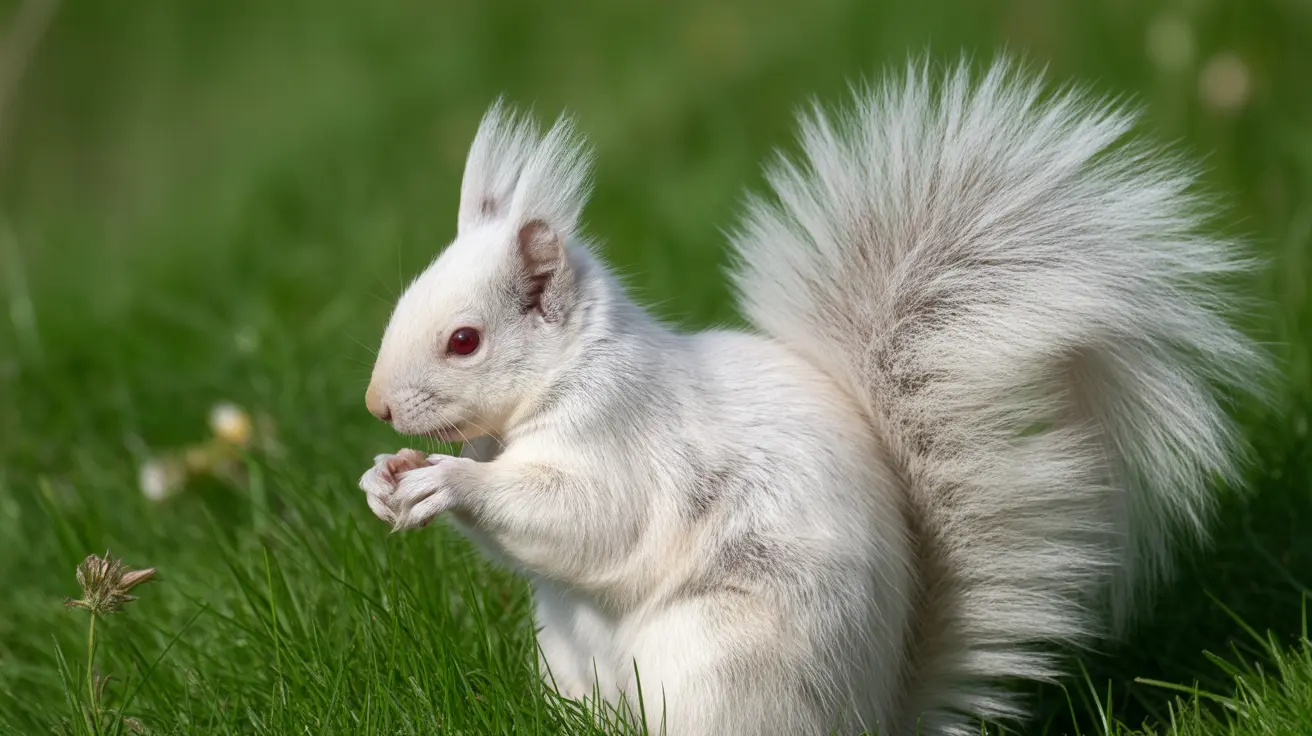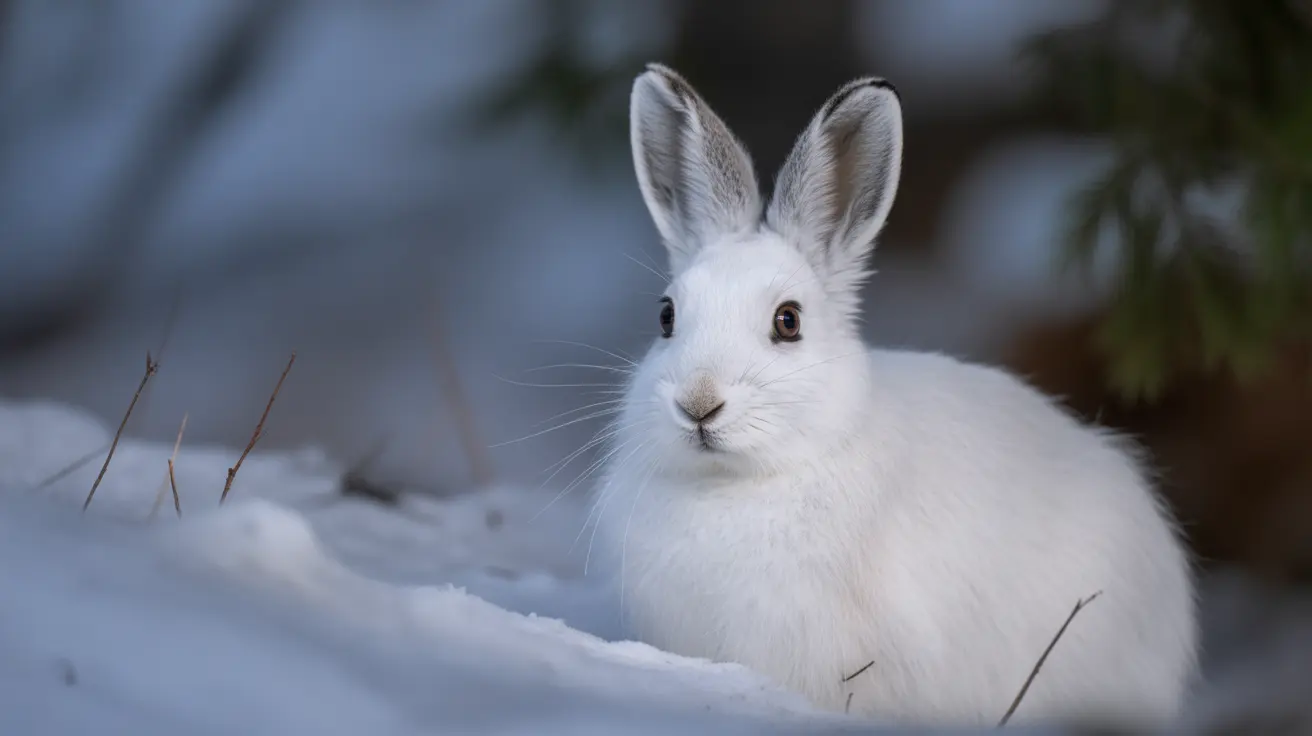Albino animals represent one of nature's most striking genetic phenomena, captivating wildlife enthusiasts and pet owners alike with their ethereal, snow-white appearance. From ghostly rattlesnakes to pristine hedgehogs, these remarkable creatures offer a fascinating glimpse into the complex world of genetic variation. For pet parents, understanding albinism becomes particularly important when caring for animals that carry these unique genetic traits.
The recent documentation of ten incredibly rare albino animals spotted in the wild has reignited interest in this genetic condition that affects countless species across the animal kingdom. These sightings remind us that albinism isn't just a wildlife curiosity—it's a genetic reality that can impact our beloved pets, requiring specialized knowledge and care approaches from responsible owners.
Understanding the Genetic Causes of Albinism
Albinism occurs when animals inherit genes that prevent or reduce melanin production, the pigment responsible for coloration in skin, fur, feathers, and eyes. This genetic condition affects approximately one in every 10,000 to 20,000 animals in most species, making albino animals genuinely rare in natural populations.
The condition results from recessive genes, meaning both parents must carry the albino gene for offspring to display the trait. This inheritance pattern explains why are albino animals rare—the statistical likelihood of two carriers mating and producing affected offspring remains relatively low in wild populations.
Why Albino Animal Survival Rate Remains Low
The striking appearance that makes albino animals so captivating also creates significant survival challenges. Without protective pigmentation, these animals face multiple disadvantages in their natural environments. Their lack of camouflage makes them highly visible to predators, while their distinctive appearance can also make them outcasts within their own species.
Sun sensitivity in albino animals presents another critical challenge. The absence of melanin leaves their skin vulnerable to harmful UV radiation, leading to sunburn, skin cancer, and other health complications. Additionally, many albino animals experience vision problems, including photophobia (light sensitivity) and reduced visual acuity, further compromising their survival prospects.
Care for Albino Pets: Special Considerations
Pet owners fortunate enough to care for albino animals must understand the unique needs these special companions require. Albino animal health considerations extend beyond their striking appearance to encompass various medical and environmental factors that directly impact their wellbeing.
Creating a suitable environment involves limiting direct sunlight exposure and providing adequate shade and UV protection. Indoor pets benefit from controlled lighting conditions, while outdoor time should be carefully managed during peak sun hours. Regular veterinary check-ups become even more crucial for monitoring skin health and addressing vision-related issues.
Albino Dog Health Issues and Management
Canine albinism, while rare, requires specific attention from dog owners. Albino dogs often experience increased susceptibility to skin cancers, eye problems including cataracts, and hearing difficulties. These animals typically require sunscreen application for outdoor activities, specialized eye care, and regular monitoring for skin abnormalities.
Nutrition also plays a vital role in supporting albino pets. A diet rich in antioxidants can help protect their sensitive skin and support overall immune function. Supplements may be recommended by veterinarians to address specific health vulnerabilities associated with the absence of protective pigmentation.
Conservation and Protection Efforts
Albino squirrel conservation efforts and similar initiatives for other species highlight the importance of protecting these genetic rarities. While albino animals face natural selection pressures in the wild, their presence contributes to genetic diversity and scientific understanding of inheritance patterns.
Wildlife rehabilitation centers and conservation organizations often provide specialized care for albino animals that cannot survive independently in their natural habitats. These efforts help researchers better understand the challenges these animals face and develop improved care protocols that benefit both wild and domesticated albino animals.
Frequently Asked Questions
What is the difference between true albinism, partial albinism, and leucism in animals?
True albinism involves the complete absence of melanin production, resulting in white or pale coloration and pink or red eyes. Partial albinism shows reduced melanin in some areas, while leucism affects only certain pigment types, often leaving eyes their normal color. Understanding these distinctions helps pet owners and wildlife observers correctly identify different genetic conditions.
Why are albino animals so rare in the wild and what factors affect their survival?
Albino animals are rare due to the recessive nature of albinism genes and the survival challenges they face. Factors affecting their survival include increased predator visibility, sun sensitivity, vision problems, and social rejection by their species. These combined pressures significantly reduce their chances of reaching reproductive age in wild populations.
Do albino pets require special care, and what health issues should owners watch for?
Yes, albino pets require specialized care including UV protection, regular eye examinations, skin cancer monitoring, and potentially modified diets. Owners should watch for signs of sunburn, vision changes, hearing problems, and unusual skin growths. Regular veterinary care and environmental modifications help ensure these special animals live healthy, comfortable lives.
How does albinism affect an animal's eyesight and sensitivity to sunlight?
Albinism typically causes increased light sensitivity, reduced visual acuity, and sometimes complete vision loss. The absence of protective melanin in the eyes makes them extremely sensitive to bright light. Pet owners must provide appropriate lighting conditions and may need to use protective eyewear for their albino animals during outdoor activities.
Are there any animal species or breeds where albinism is more common, and why?
Certain isolated populations or inbred lines may show higher albinism rates due to limited genetic diversity. Some laboratory animal strains have been selectively bred for albinism research purposes. However, in most wild species and healthy pet populations, albinism remains consistently rare due to natural selection pressures and genetic diversity maintenance.






